Tech-Savvy Strategies to Find Your Lost iPhone
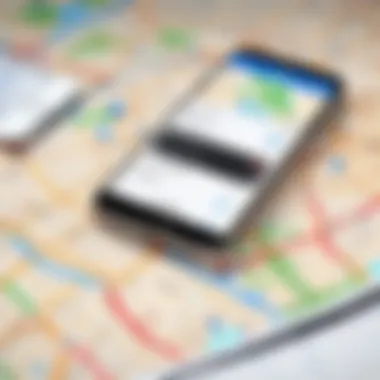
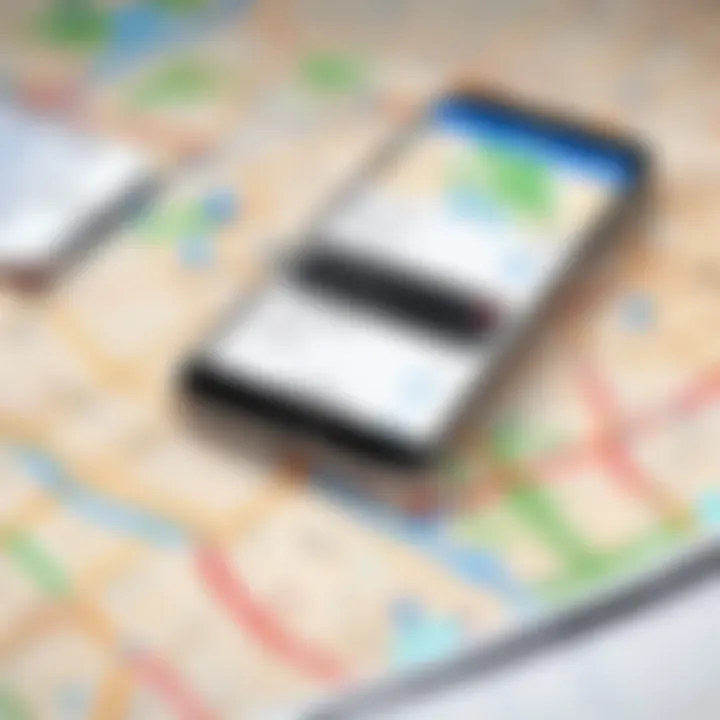
Intro
Misplacing an iPhone can be a stressful experience. With the reliance on the Find My iPhone feature, many feel they have lost the ability to track their device once this option is unavailable. Fortunately, there are various strategies individuals can employ to locate a lost iPhone without this built-in feature. This article explores these alternative tracking options and presents practical methods for finding your device in the event it goes missing. Understanding these strategies is essential for technology enthusiasts who wish to navigate the complexities associated with modern gadgets.
Overview of the Technology
A missing iPhone can still be traced through methods that utilize the device's inherent abilities. Here, we delve into various technologies that might assist in tracking your device.
Key Specifications
- Bluetooth Connectivity: iPhones are equipped with Bluetooth capabilities, allowing you to connect to nearby devices. This can assist in locating the phone if it is within a close range.
- Wi-Fi: The connection to Wi-Fi networks can be used to track the last known location of your device, as long as it was logged into a network before it went missing.
- Cellular Networks: If a mobile network is available, it may be possible to trace your device through its connection to cell towers.
Unique Selling Points
One of the major advantages of the iPhone is its wide range of application and services that can help track your device. From third-party apps to community services, there are numerous options available beyond the native tracking method. This versatility makes it easier for users to find their device no matter the situation.
Local Tracking Services
When an iPhone is lost, relying solely on technology might not be enough. Local services can also offer significant assistance. For example:
- Local Law Enforcement: If you believe your iPhone has been stolen, reporting to the authorities can provide a channel for recovery.
- Community Apps and Online Forums: Platforms like Reddit can connect users who have lost devices with local followers who may assist in recovery efforts.
- Lost and Found Services: Some local businesses or community centers have systems for reporting lost items, which can also include electronic devices.
Preventative Measures
Taking steps before losing your device plays a crucial role in increasing the chances of recovery. Here are some tips:
- Regular Backups: Regularly back up your data through iCloud or to a computer. This ensures you will not lose important information even if the device cannot be recovered.
- Security Features: Enabling features such as passcodes and biometric setups can protect your personal information in case of theft.
"Many take the Find My iPhone feature for granted, not knowing there are alternatives to explore once it is not an option."
Implementing these strategies will help mitigate the stress that arises from losing an iPhone. While Find My iPhone is a useful tool, it is not the only method to explore in case of disaster. Understand each option to increase your chances of recovery.
Preamble to Finding a Missing iPhone
Losing an iPhone can trigger stress in anyone. The intricacies of modern technology amplify the need for strategies beyond the built-in Find My iPhone feature. As technology enthusiasts or regular users, understanding multiple options can provide peace of mind. This guide serves multiple objectives: illuminating alternative tracking methods, signaling the importance of local support systems, and advocating for preventative measures. Each method will be analyzed, aiming to strengthen users’ ability to effectively navigate this common challenge.
The Importance of Knowing Your Options
When faced with a missing iPhone, knowing various tracking and recovery methods can prove invaluable. Relying solely on the Find My iPhone feature may not always yield results. Familiarity with alternative options empowers users. Some key points to consider include:
- Diversity of Tracking Methods: Each lost situation is unique. Having a variety of options increases the likelihood of recovery.
- Local Resources: Engaging with local services can provide support that digital solutions cannot. Sometimes, proactive steps in the real world yield better outcomes.
- Technological Limitations: Third-party applications and devices may offer solutions unavailable through default settings. Many users are unaware of these possibilities.
By recognizing the breadth of resources at one's disposal, there is a greater chance of locating a missing device.
Understanding the Limitations of Find My iPhone
Despite its convenience, the Find My iPhone feature does have limitations. Acknowledging these can help in formulating a backup plan. Some critical limitations include:
- Device Status Dependency: For Find My iPhone to work, the device must be powered on and connected to the internet.
- Account Constraints: It requires access to the associated iCloud account. If login details are forgotten, tracking becomes nearly impossible.
- User Error: In some cases, users may unintentionally disable the feature, or it might not have been enabled in the first place.
Understanding these limitations forms the foundation of knowing what steps to take next. This knowledge ensures that users do not rely solely on a singular tracking method, but rather utilize a comprehensive approach to recover their lost devices.
Initial Steps to Take When an iPhone is Missing
Losing an iPhone can be distressing, given how pivotal these devices are in everyday life. Addressing the immediate aftermath of the disappearance is critical. The initial steps taken can significantlly impact the chances of recovery. Knowing the right actions to take sets the foundation for more advanced strategies later on.
Retracing Your Steps
When you realize your iPhone is missing, the first course of action should be to retrace your steps. Think about where you have gone since you last saw the device. This includes:


- Home or Office: Check around the immediate environment. Look under furniture and in bags.
- Shops or Restaurants: If you were out, contact the places you visited. Employees may have found it.
- Public Transport: If you used a bus or train, inquire with the station or transport service.
Being thorough in this search is crucial. Since an iPhone can easily blend into places, it might be overlooked. Revisiting these locations increases the chance of discovering the device, potentially before someone else finds and keeps it.
Checking Nearby Locations
If retracing steps does not yield results, expanding the search to nearby locations is essential. This means looking at other frequent spots where you may have left it inadvertently. Consider:
- Friends’ or Family Members’ Houses: If you visited someone, check with them. Sometimes, the device might get left behind without you realizing it.
- Car: Look in the car if you drove. It might be under the seat or in the glove compartment.
- Outdoor Areas: If you had been outdoors, check the local park or usual hangouts.
Connecting with people at these locations can also provide helpful insights. They may have seen the lost iPhone or offer to assist in your search effort.
"Finding your iPhone often begins with where your memory leads you. Revisiting familiar spaces can reveal overlooked spots."
By methodically approaching the initial efforts for recovery, one can increase the chances of locating the device before further actions are necessary.
Using Alternative Tracking Methods
Searching for a missing iPhone can be a frustrating experience without the Find My iPhone feature. However, alternative tracking methods exist and they can be quite effective. Using different solutions enhances the chances of recovery. These methods can address specific situations that Find My iPhone might not cover fully. For tech-savvy individuals, exploring these strategies makes sense. They can provide flexibility, reliability, and sometimes, immediate results.
Exploring Bluetooth Tracking Devices
Overview of Tracking Options
Bluetooth tracking devices offer a practical way to locate lost belongings. These small gadgets, such as Tile or Apple's AirTag, allow users to keep track of their devices through Bluetooth connectivity. The key characteristic of this option is its active tracking capability. This means the device can help locate your iPhone even if it is in close proximity, providing precise location details. Such devices are beneficial for this article as they work independently of network availability, unlike traditional GPS.
The unique feature of these trackers is the crowd-sourced network, which can alert the owner if another user passes within close range of the lost item. This can immensely increase the odds of recovering a lost iPhone. However, Bluetooth trackers do have some disadvantages. They usually have limited range, typically around 100-300 feet, unless connected to the wider network of users.
Integrating with Your iPhone
When it comes to integrating tracking devices with your iPhone, ease of use is paramount. Most Bluetooth trackers have user-friendly applications that pair directly with iOS devices. This characteristic makes it simple for users to manage their devices from their smartphones. It is a popular choice because users can receive instant alerts when their phone is nearby.
The unique aspect of integrating these trackers is the seamless experience it offers. Users can track multiple devices simultaneously using a single app. This adds a layer of convenience. Nevertheless, the reliance on smartphone compatibility can sometimes limit functionality if the app is not well-designed or frequently updated.
Leveraging Third-Party Apps
Available Tracking Applications
Various tracking applications exist that can supplement the search. Apps like Prey, Lookout, and Find My Device can enhance recovery efforts. The key characteristic of these applications is their diverse features, ranging from location tracking to data recovery options. They are beneficial because they can often track more than just iPhones, making them versatile tools for users.
A unique feature of these applications is their integration with cloud services. This allows users to track their devices remotely. However, users must proceed with caution, as some apps might ask for excessive permissions or data, raising privacy concerns. Evaluating app reviews and permissions is essential before choosing.
Setting Up and Using These Apps
Setting up third-party tracking applications is usually straightforward. Most involve downloading the app, creating an account, and granting necessary permissions for tracking. The user-friendly setup makes them a beneficial choice for those who prefer quick solutions.
Once set up, users can easily monitor their devices from anywhere through an intuitive interface. Unique features often include geofencing alerts, which notify users if their device crosses a designated boundary. Although beneficial, these apps might rely on constant internet connectivity, which could be an issue if the phone has lost battery.
Inquiring About Local Services
When your iPhone goes missing and you are unable to utilize the Find My iPhone feature, seeking assistance from local services becomes crucial. These services can play a significant role in enhancing your probability of recovering the lost device. By reaching out to local authorities and lost and found services, you can gather insights and leverage resources that may not be readily available to you. The following sections outline practical steps to take when inquiring about local services, detailing their importance and benefits.
Contacting Local Authorities
Reporting Your Lost Device
When you report your lost device to local authorities, you engage in a formal process that may assist in the recovery of your iPhone. This is an important aspect because it creates an official record of your lost device. Police reports can sometimes aid in proving ownership, especially in situations where a found device is handed in but requires verification of its rightful owner. Reporting also enables law enforcement to collect data on thefts in your area, which can help them identify patterns and potentially recover stolen devices more effectively.
A key characteristic of reporting your device is that it adds a layer of accountability. Should someone find your iPhone and hand it over to the authorities, they might look for corresponding reports to find the owner. This approach can be beneficial in cases of theft, as it aligns with standard investigation protocols.
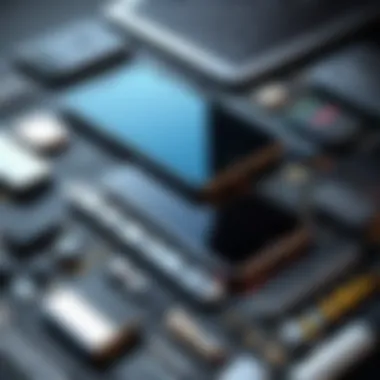

However, there may be drawbacks. Not all police departments have the resources to assist with lost property, particularly when it's not deemed as stolen. Time-consuming paperwork and potential bureaucratic delays can also be discouraging.
Potential Support from Law Enforcement
Involving law enforcement can provide additional support when your iPhone is missing. Local authorities often have access to resources that can aid in locating lost or stolen items. Their expertise in handling such cases may lead to faster resolutions.
A significant aspect of support from law enforcement is their ability to utilize databases that track stolen electronic devices. They may also employ investigative techniques that an average citizen would not have access to. This can be incredibly advantageous for those who have lost their devices under suspicious circumstances or suspect theft.
Nonetheless, it's essential to approach this path with realistic expectations. Law enforcement's ability to act may depend on available evidence and the nature of the loss. If the device was lost in a crowded public area, police may have limited capability to track it down without substantial leads.
Utilizing Lost and Found Services
Local Business Policies
Many local businesses operate lost and found services that can significantly increase your chances of recovering your iPhone. Inquire with cafes, shops, and public facilities about their specific policies regarding lost items. Each establishment may have different protocols on how they handle found devices, including wait times before a device can be considered unclaimed.
The benefit of checking local businesses is that many are proactive in maintaining a lost and found database. They recognize the importance of returning lost items to their owners, which is a key characteristic of community engagement.
However, the main drawback is variability in responsiveness. There is a chance not every employee will be aware of the policies or follow them consistently. You may need to persistently follow up, which can be frustrating.
Connecting with Community Resources
Finding community resources can be very beneficial when your iPhone is missing. Many neighborhoods have community websites or social media groups dedicated to connecting residents and sharing important information. Through these channels, you can post about your lost device, including details that might help someone identify it.
A remarkable feature of connecting with community resources is the sense of collective effort. Often, people are willing to look out for lost items in their vicinity, increasing the likelihood of recovery. Furthermore, local community boards or forums like Reddit can provide helpful tips and experiences from others who have faced similar situations, assisting in your recovery efforts.
The challenge with this approach lies in the variability of engagement level within communities. Not every community will have active participation in reporting lost items, which can limit its effectiveness.
Notifications and Alerts
Notifications and alerts play a crucial role in the quest for a missing iPhone. When a device is lost, time becomes a critical factor. The sooner you notify others and set alerts, the better the chances of recovering your device. This section outlines the significance of alerting your contacts and provides strategies on how to set up notifications for future security.
Alerting Contacts
Informing Friends and Family
Informing friends and family can provide critical support when an iPhone is missing. These individuals can help in various ways. They might recall where you last used the device or assist in searching common locations. By notifying them without delay, you create a network of support that can mobilize quickly.
One vital characteristic of this approach is its immediacy. The sooner you share the situation, the better the chances you have for recovery. Additionally, your friends or family may have encountered similar situations and can provide valuable insights from their experiences. The collaborative aspect of informing trusted contacts makes this method beneficial.
However, there can be disadvantages to consider. Depending on personal relationships, not everyone is available, or some might not respond promptly. Still, engaging your close circle often proves helpful, especially if they are nearby or have access to locations you've visited recently.
Utilizing Social Media
In today’s digital age, social media offers a platform for rapid information dissemination. Utilizing social media can extend your reach when trying to locate a lost iPhone. With quick posts on networks like Facebook or Twitter, you can inform a larger audience about your situation.
The key characteristic of using social media is its vast reach. You can connect with a multitude of people, including those who may unexpectedly find your device. Moreover, social media platforms often have local groups where members support one another in community matters. This can greatly increase your chances of recovering a lost phone.
Despite the benefits, there are some drawbacks. Sharing information about a lost device publicly raises privacy concerns. It is essential to weigh the necessity of visibility against the potential risks. Keeping your posts focused and concise can help maintain privacy while still reaching a wide audience.
Setting Up Alerts for the Future
Setting up alerts is a proactive step that can prepare you for future incidents. Enable notifications through your device settings for various scenarios. The simplest approach is to use emergency contacts within your iPhone settings. This allows you to alert someone in case of a future emergency, including lost devices.
Regular checks on your security settings ensure that you are up-to-date with the latest protective measures. By documenting critical information, such as your device identification and settings, you set a foundation for efficient alerts down the line.
By combining the efforts of notifying contacts and using social media alongside setting future alerts, you enhance your strategy for handling the unfortunate event of a missing iPhone. Overall, these steps empower individuals and provide a structured approach to dealing with this common issue.
Analyzing Past Experiences
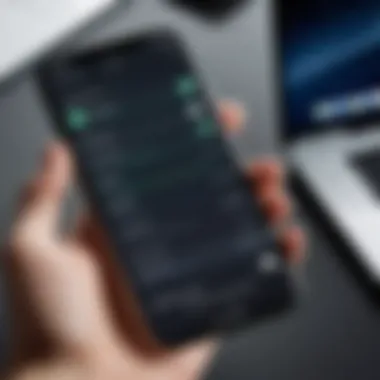
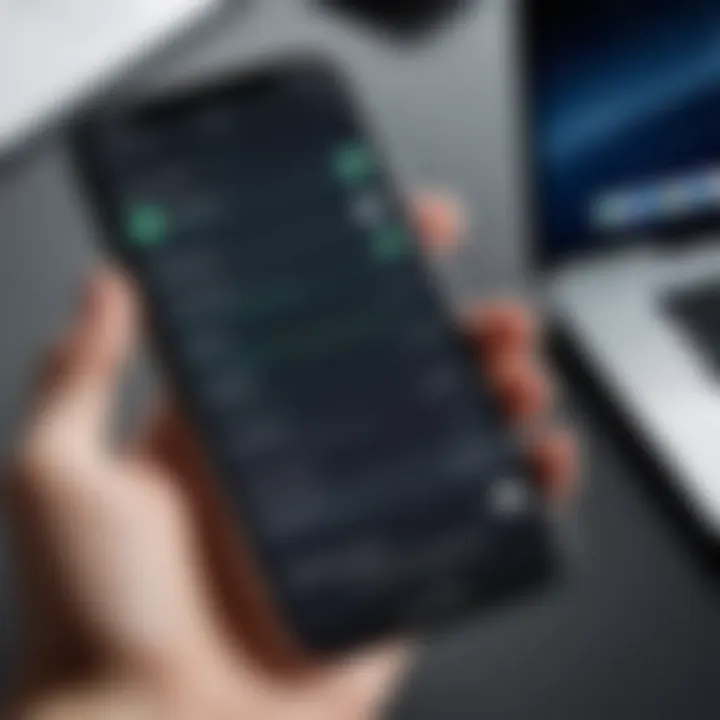
Understanding past experiences regarding losing an iPhone is crucial for developing effective strategies. Each incident can provide valuable insights that inform future behavior. Analyzing previous losses helps identify patterns—such as common locations where the device was lost or frequent distractions that contributed to the loss. This critical examination allows users to adopt a more thoughtful approach when handling their devices.
Moreover, reflecting on the emotional and practical consequences of losing an iPhone can emphasize the importance of taking necessary precautions. The stress and inconvenience that arise from a lost device serve as strong motivators to improve one's personal security measures.
Learning from Previous Losses
When someone has experienced a lost iPhone, it becomes a chance to learn and grow. Users should ask questions like: What went wrong? Was the phone misplaced while I was in a hurry? Did I neglect to secure my device? By addressing these queries, individuals can pinpoint missteps that can be avoided in the future. Documenting these experiences creates a personal log that can be referenced later.
Additionally, sharing stories about lost devices with friends or family can foster a communal understanding of strategies that work. Often, others have faced similar situations and can offer insights into what helped them recoup their devices or prevent future losses.
"Understanding your past actions is the first step in crafting a proactive strategy."
Incorporating Lessons into Future Precautions
Taking lessons from prior experiences and applying them to future actions is essential. After identifying key mistakes from previous loss events, one can take steps to mitigate risks moving forward. For instance, if someone frequently forgets their phone at work, it may be beneficial to establish a routine of keeping it in a designated location.
Moreover, individuals should consider implementing preventative measures such as:
- Utilizing phone cases with built-in tracking features. This can help in quickly locating the phone if it goes missing.
- Regularly updating security settings, ensuring access to tracking abilities are optimized.
- Documenting critical information like device specs, serial numbers, and significant contact information. This can be a lifesaver when contacting authorities or lost and found services.
By taking these precautions, users can minimize their chances of losing their devices again. In summary, analyzing past experiences is not merely a reflection; it is a way to foster a proactive mindset about smartphone security.
Discussing Preventative Measures
Addressing the issue of finding a missing iPhone without utilizing Find My iPhone is critical. One effective approach is focusing on preventative measures. These steps not only help in reducing the anxiety associated with losing a device but also enhances the chances of recovery. By creating a plan in advance, individuals can ensure they are prepared for potential mishaps. The core idea is not just to react to loss but to proactively mitigate the risks involved in smartphone ownership. This strategy is beneficial because it can save time, stress, and even financial costs that arise from replacements or data loss.
Creating a Lost Device Plan
Documenting Critical Information
Documenting critical information involves gathering and storing essential details about your device. This includes the serial number, model, and any other identifying attributes linked to your iPhone. Such documentation is crucial because it can facilitate recovery efforts. If another person finds your device, having identifiable information can lead to a swift return.
The key characteristic of this aspect is its simplicity and practicality. It is a beneficial choice for anyone who wants to safeguard their valuable gadget. A unique feature of documenting information lies in its accessibility; you can keep it on a cloud service or in a secure note application. However, the potential disadvantage is the reliance on digital means, which could also be subject to unauthorized access. Hence, balancing ease of access with security is essential in this strategy.
Regularly Updating Security Settings
Regularly updating your security settings is a fundamental practice that bolsters your device's defenses. This involves ensuring passwords are strong, activating two-factor authentication, and keeping the operating system current. Keeping security measures up-to-date contributes significantly to the overall goal of protecting your device from thieves and unauthorized users.
The importance of this is underscored by the fact that security vulnerabilities can evolve quickly, making regular updates essential. A top characteristic of this practice is its proactive nature. It is a popular and beneficial choice for tech-savvy individuals, especially within this context. A unique feature of maintaining security settings regularly includes using alerts for possible unauthorized access. While strong security settings may feel inconvenient at times, their advantages in safeguarding personal information and preventing loss far outweigh any minor inconveniences.
Investing in Enhanced Security Features
Investing in enhanced security features goes beyond standard measures. This includes utilizing options like biometric locks, advanced encryption, and security software. These features provide added layers of protection for the device and personal data. With the proliferation of technology, seeking enhanced security has become increasingly relevant. It helps in strengthening security from various angles and discourages thieves from targeting your device.
Such an investment can seem significant upfront, but the long-term benefits of peace of mind and potential avoidance of loss are unquestionable. Enhanced security features allow for a more comprehensive approach to device safety, making them a critical element in the preventative conversation surrounding lost devices.
The End and Final Thoughts
The significance of wrapping up an article on locating a missing iPhone without the Find My iPhone feature cannot be overstated. In today’s digital age, the reliance on smartphones has grown immensely, and losing one can cause substantial inconvenience. By summarizing the various methods discussed throughout this article, readers can recall practical strategies to recover their devices effectively. This section serves not only as a conclusion but also as a pivotal reminder of the importance of being prepared and proactive when it comes to device security.
Recapping Methods and Options Available
The journey through locating a missing iPhone has revealed a multi-faceted approach. Each method offers unique advantages:
- Retracing Your Steps: Re-examine recent locations to jog your memory about where the device might be.
- Bluetooth Tracking Devices: Use devices like Tile to enhance tracking abilities when the phone is out of range of the user.
- Local Authorities and Services: Engaging with services can help when a device is lost in public locations.
- Third-Party Apps: Apps can provide additional tracking functionalities not available through Find My iPhone, expanding recovery options.
These strategies combine personal initiative with technology to create a comprehensive recovery plan. Readers should not overlook any method, as they can complement one another in specific situations.
Encouraging Readers to Stay Proactive
Staying one step ahead is crucial in the modern technological landscape. Proactivity can greatly reduce the stress of losing a device. Here are effective ways to remain vigilant:
- Regularly update security settings on your device.
- Document essential information related to your iPhone, such as serial numbers and identification.
- Invest in Bluetooth tracking solutions that work seamlessly with your devices.
Ultimately, adopting preventive practices ensures that if a device goes missing, the path to recovery is clearer and less fraught with uncertainty. Taking deliberate steps today makes all the difference when an iPhone is lost tomorrow.







